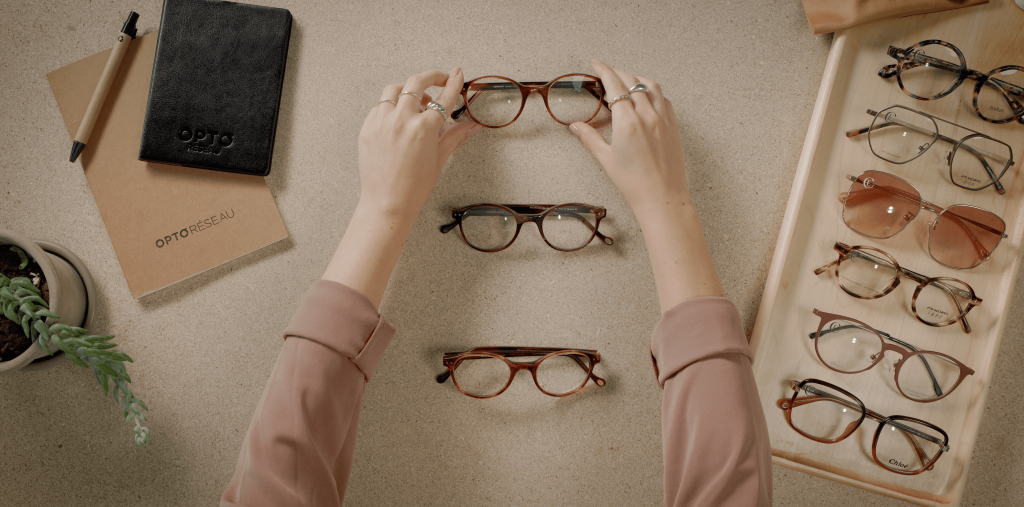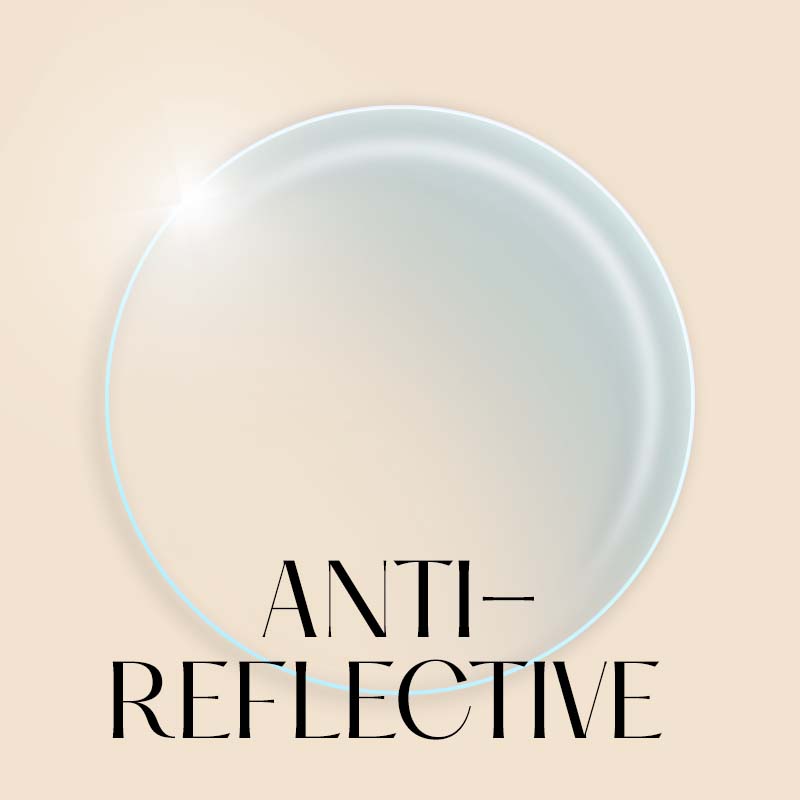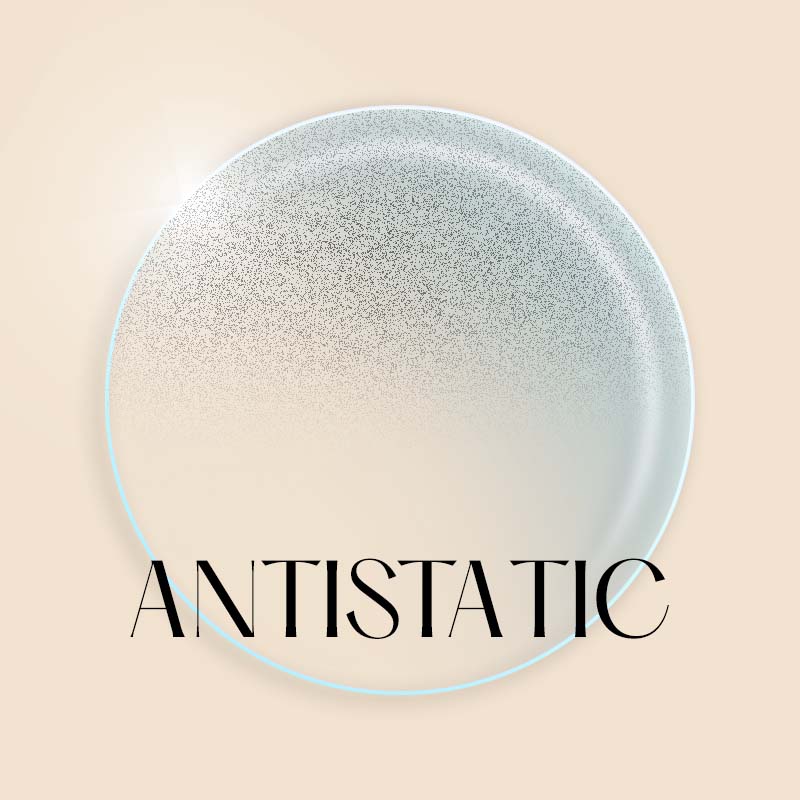A guide to anti-reflective coatings: options available for corrective lenses
When you’re shopping for new glasses, your optician might recommend you add a few treatments to your lenses to improve their lifespan and optimize your visual comfort. Here are some of the most common anti-reflective treatments (also known as coatings) available.

What does an anti-reflective treatment do?
Anti-reflective coatings reduce reflections caused by light to produce a crisper image and prevent glare. They allow more light to pass through the lenses. In other words, they reduce the amount of light that bounces off the surface of the lenses.
What is the difference between an anti-reflective coating and polarized lenses?
Unlike polarized lenses, an anti-reflective coating eliminates reflections on your lenses by dispersing the light that hits the surface of your lenses. Polarized lenses for their part eliminate the glare produced on flat, reflective surfaces such as water and snow.
Types of anti-reflective treatments
Standard anti-reflective treatments
In addition to making your lenses glare-resistant, basic anti-reflective treatments also include a scratch resistance coating.
Scratch resistance is a protective layer added to your lenses to make them better withstand friction and scratches over time.
If the only thing that ever came into contact with your lenses was light, a basic anti-reflective treatment would be an ideal solution. But we all know this is not the case and there are myriad factors that can affect our vision. That’s why major lens manufacturers such as Zeiss, Essilor, Nikon, and Hoya continue to develop new products and technologies in order to offer a range of treatments that make lenses more resistant.
In fact, in addition to standard treatments, there are various kinds of anti-reflective coatings available today. The more advanced the treatment, the greater the benefits.
Because high-end treatments are designed with state-of-the-art technologies, they provide the best results in terms of visual quality and comfort.
Advanced anti-reflective treatments
Advanced anti-reflective treatments provide optimal protection against glare and scratches. Because these kinds of treatments require cutting-edge technology, depending on the manufacturer and processes they use, production time can vary between 24 and 48 hours. Keep in mind that advanced anti-reflective treatments can include extra coatings.
Here are a few:
- Oleophobic coating: reduces smudges from fingers, repels grease and oil, and makes the lenses much easier to clean and remain clean longer.
- Hydrophobic coating: repels water and makes it easier to maintain the lenses.
- Antistatic coating: when you clean your lenses with the microfibre cloth, you create a static charge on your lenses. This coating reverses this charge to repel dirt and dust.
- Improved aesthetics: your lenses will be even more transparent than lenses with a basic anti-reflective coating.
- Advanced anti-reflective coatings can also include UV and blue light protection.
The video below (french only) will give you a better understanding of the differences between anti-reflective treatments. There are three types of lenses featured: a pair of lenses with only a scratch-resistance coating, a pair of glasses with a regular Crizal EC anti-reflective coating by Essilor, and a pair of lenses with a sophisticated Crizal Sapphire anti-reflective coating.
Choose the corrective lenses that meet your needs
Our experts will always recommend options that suit your specific needs and lifestyle. Depending on your criteria, budget, and how you’ll be using your glasses, our opticians and advisors can suggest the best treatments to ensure you can benefit from the best vision possible.
To book a try-on session and learn about the options available for your corrective lenses and coatings, schedule an online appointment today!
- Antiglare
- Eyestrain
- Ophtalmic lenses













